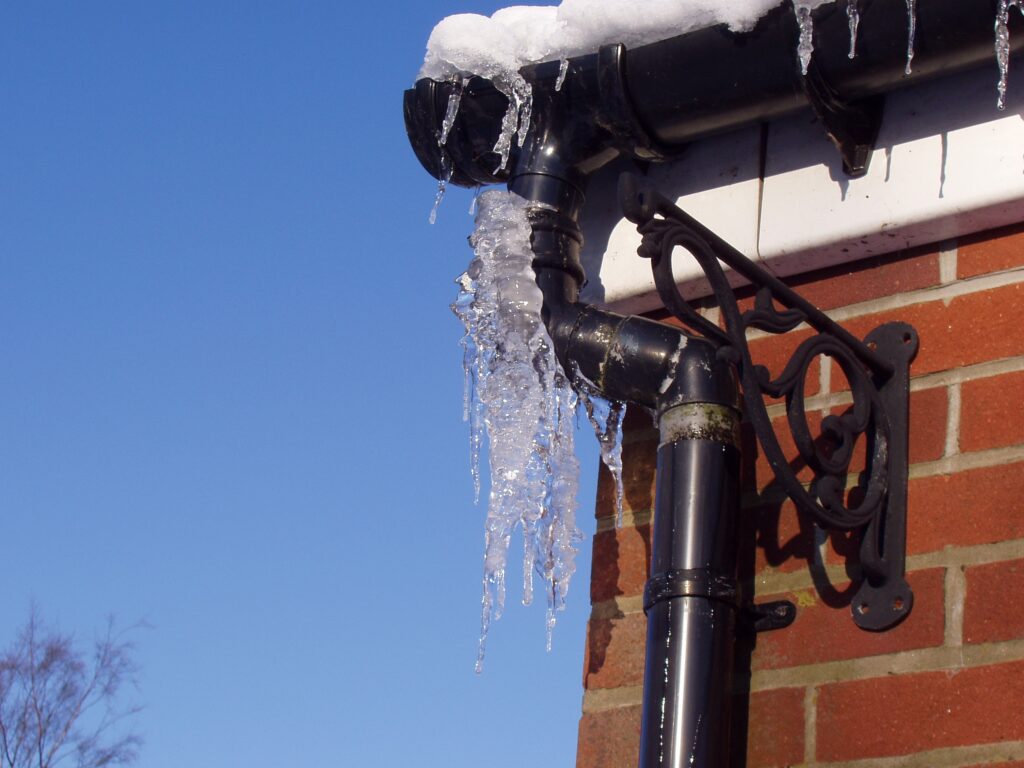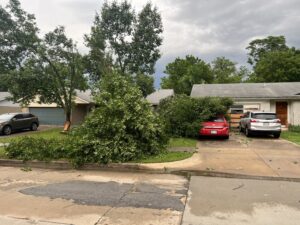As winter weather approaches, it’s time to prepare homes and cars for the incoming cold weather. It’s better to check and prepare for winter before it’s already in full force, where items like space heaters are harder to come by and more expensive.

Check furnaces, heaters and filters
One important step to ensure a comfortable temperature for the inside of one’s home despite external frigid temps is to check that furnaces and heat pumps are working properly. Checking furnace and heater air filters to make sure they’re clean can allow more airflow to the home, using less energy than if the filters were dirty. To replace your own filters, ensure that the circuit breaker that supplies the furnace is off first, and replace with the same size if the filter is dirty. Ideally, furnace filters should be replaced every couple of months. When turning on the heater for the first time, allow the temperature to adjust for about fifteen to twenty minutes. If the thermostat doesn’t change during this time, you might want to call a professional to check if the thermostat is working correctly. A burning dust smell is common when furnaces come back to life in the winter, and is not dangerous, but if the smell is bothersome you can open some windows to clear the house out. However, if the smell is more like a gas or oil smell, call a professional. Make sure vents around the home are uncovered and clear of furniture or other items to allow air flow and reduce fire hazards. A technician can check furnaces and heater pumps to make sure they’re working like they should, and it’s better to call sooner than later when everyone else is also calling for repairs when it’s freezing.
Are your doors and windows insulated against the cold?
Another important thing to check while prepping for cold weather is how well the windows and doors are insulated against wind and outside temperatures. If in the morning you awake to condensation on your windows, chances are the windows needs repaired or replaced. Check windows and doors for drafts, making sure the weather stripping around them isn’t damaged or needing to be replaced.
If you see daylight peeking through around your door, the weather stripping most likely needs to be replaced. Replacing weatherstripping is a task you can most likely complete yourself, and keeping entry points well insulated helps in a lower energy bill and a warmer home. Fully open and close windows and doors to make sure they aren’t misshapen or need to be adjusted and make sure they can lock and unlock easily as well.
Clean out the gutters and drains while you can
Gutters and drainage spouts are important for keeping water away from the foundation of buildings. Water can soften the soil underneath and around the foundation, causing it to crack, especially if the moisture on the foundation freezes. It’s important to clean out gutters and drains off fallen leaves and sticks before cold rain and snow blow in with winter. Too full gutters can fall off a home, as well. The tips of tree branches should ideally be about six foot away from the roof, to minimize the chances of any branches landing on your home during a winter storm. Professional landscapers can trim tree branches and clean gutters to ensure the outside of your home is ready for snow and ice. Some companies even aid in stringing up Christmas lights for festive fun.
Clean those chimneys!
As the temperature starts dipping and the cold starts seeping in, it’s tempting to light up the fireplace to keep warm. According to the National Fire Prevention Association, one of the leading factors of house fires started by heating equipment is not properly cleaning chimneys before lighting them up. Tar from wood or coal burning in the fireplace builds up on the inside of chimneys in a residue known as creosote, which is a highly flammable substance. Creosote is the main cause of chimney fires. If the sparks of a fire or the flue of the fireplace gets too hot, the creosote can ignite.
It is recommended that homeowners weep their chimneys at least once a year, and definitely at the beginning of winter. If ash or wood remains from last year’s cold weather, it should be cleaned out using a shovel or ash vacuum. A regular vacuum, while able to suck up the ash, will also release ash into the air. Don’t vacuum hot ash, even with an ash vacuum, as that can cause a fire. A certified chimneysweep can check creosote buildup and clean the chimney, and can also check the integrity of the chimney itself and ensure it doesn’t need repairs. Sometimes animals or moisture can end up inside the chimney, especially if the chimney cap wasn’t affixed correctly, and need to be removed before lighting any fires. Chimney caps are usually made of a steel or copper mesh, and protect the chimney from rain or wind. It’s important to check that the flue and damper are open, which control smoke and airflow in and out of the chimney.
Taking care of your pipes now could save you money later
A big worry for many homeowners each winter season is the dreaded pipes bursting. If the water in the pipes freeze, causing water molecules to expand, leads to pressure building between the faucet and the expanding pipe and ultimately a burst. To prevent this potentially expensive problem, if the weather is below 32 degrees, specifically at or below 20 degrees for six consecutive hours, leave one or two faucets dripping slowly to keep water moving through the pipe system.
Leaving cabinet doors open underneath sinks can allow the space to heat up more, and keeping your heat on even when you’re not home helps prevent freezing pipes. Disconnect hoses from outside faucets, as well. If the home’s pipes are in a crawlspace, make sure to close the external vents along the outside of the foundation to reduce the chance of a freeze.
If the pipes are frozen, the first sign is that no water is coming out of faucets. Leave faucets on to try and get water moving, and try to get heat to the pipes. Using a space heater aimed at the wall the pipes are in, but still a safe space away from the wall so as not to start a fire, can help thaw the pipes. Call a plumber to help thaw pipes and make sure there are no leaks anywhere.
Check those carbon monoxide detectors
With space heaters, fireplaces, and ovens for holidays all working to keep the home nice and toasty during the cold season, it’s imperative to make sure that the smoke and carbon monoxide detectors are functioning properly. Testing these systems is fairly simple; if the testers are not connected to a bigger house safety alarm system, simply press the ‘test’ button on the device. If the system is connected to an alarm system, deactivate the alarm and alert the company you’ll be conducting a test of the system before proceeding. If the alarm doesn’t go off, change the batteries and re-test. A working detection system can be all the difference during an emergency. Make sure to have an emergency plan in place and everyone in the family knows it, like fire exits and meet up areas. It can be helpful to train pets to come to you when the alarm goes off, instead of hiding from the noise. Do this by testing the system and rewarding your pets when they come to you with pet-safe treats, and keep the entire family safe.
Don’t forget the pets!
During winter weather it’s ideal to bring pets indoors to keep them safe and warm, as their noses, ears and paws are prone to frostbite. If pets do need to be outside during the winter for any reason, they need to have a dry, wind-free shelter. THe floor should be raised off the ground by a few inches, and straw can help conserve heat. A make-shift doorway using waterproof burlap, cloth, or heavy plastic can keep in body heat and help keep pets warm. Some dogs, especially smaller dogs, would do well with a sweater and paw booties, and it’s important to wipe paws clean of any chemicals used to melt ice and snow. Water and food bowls should be made of plastic so their tongues don’t stick to cold metal, and water should be checked often to ensure it’s fresh and not frozen. Check cars before starting the engine by banging on the hood, as sometimes cats and other small wildlife like to warm up against engines and in tire wells. Horses should have a barn or three-sided run-in. Some horses might need blankets to keep dry and warm, but not all horses need them. If you’re concerned about an animal left in the cold, call animal control.
Go ahead and gas up
Winter weather can bring dangerous situations, and hopefully everything has been checked and prepared and replaced if needed, but if an emergency situation does arise, having emergency kits already in place can make all the difference. Gas is expensive, but trying to keep at least half a tank of gas at all times during the winter can keep the gas tank from freezing and damaging the car. An emergency kit should be in both the home and the car, and can include emergency blankets, portable chargers, batteries, flashlights, water and snacks, a first aid kit and important medications, cat litter for melting ice, reflectors or emergency flares, paper maps and waterproof matches. If for any reason one loses electricity and heat, a tent with an emergency blanket on the outside set up in the middle of a large room can keep heat in. Stay inside the tent with blankets inside, and only leave if absolutely necessary to maintain important heat.










